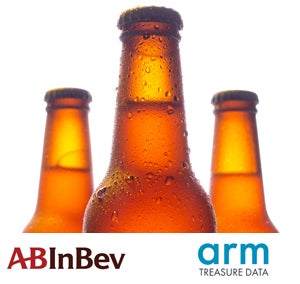AB InBev – parent to more than 500 brands, including Budweiser, Bud Light, Stella Artois and, of course, Corona – is the largest global beer company in the world, and it’s got sizable data silos to match.
But until recently it had no way to connect them, said Lucas Borges, senior global mar tech manager at AB InBev.
“We had too many brands, too many countries, too many people and too many ways of working,” Borges said.
Many of the brands in AB InBev’s portfolio, for example, work with different agencies, each of which send their own email comms. Without a centralized database, AB InBev would hit consumers with two or three messages coming from different brands and be none the wiser.
The result was at best inefficient and at worst spammy. And because engagement data from the various campaigns didn’t make it back into a single repository, the whole thing would happen again.
But for the last year, AB InBev has been working with customer data platform Arm Treasure Data (ATD) to get a handle on its brewing data problem.
The duo first devised a standardized taxonomy to bring all of AB InBev’s disparate data sources across its sprawling organization together into one database with unified customer profiles.
With a unified view, AB InBev can do a better job of figuring out the next best action and analyzing post-campaign data.
“These are things we weren’t able to do well before when communications were handled separately without a centralized database,” Borges said.
AB InBev has also used ATD’s tools for journey orchestration and an early access program for data security and governance features – both of which the vendor released Wednesday as platform updates. ATD also topped up its prebuilt data connectors with 20 new integrations, including The Trade Desk, Criteo, Magento, Snapchat and Facebook Leads.
For a global company as vast as AB InBev, data governance is a top priority. The multinational can now grant data access on an as-needed basis across the company, from data scientists to marketers to the technical folks responsible for facilitating the data flow into ATD.
“It gives us more control over our data, which was very fragmented before,” Borges said. “At the same time, only people who have an active status can even access the platform.”
Having invested the time in getting its data organized, cleaned and unified, AB InBev now can do more with it, including more personalized marketing and gathering better insights. “It’s a journey we’re going through right now,” Borges said.
But Borges also said that AB InBev isn’t planning to change or align its marketing to capitalize on the coronavirus-induced increase in booze sales. Alcohol sales are booming, at least for the moment, as people stock up during the quarantine.
“Our goal right now isn’t to make advertisements about beers and drinks,” he said. “Our entire focus is on how we can help solve problems and support the community.”
In March, AB InBev started manufacturing hand sanitizer and disinfectant in several of its factories, with plans to donate more than 1 million bottles to hospitals and frontline workers around the world.












